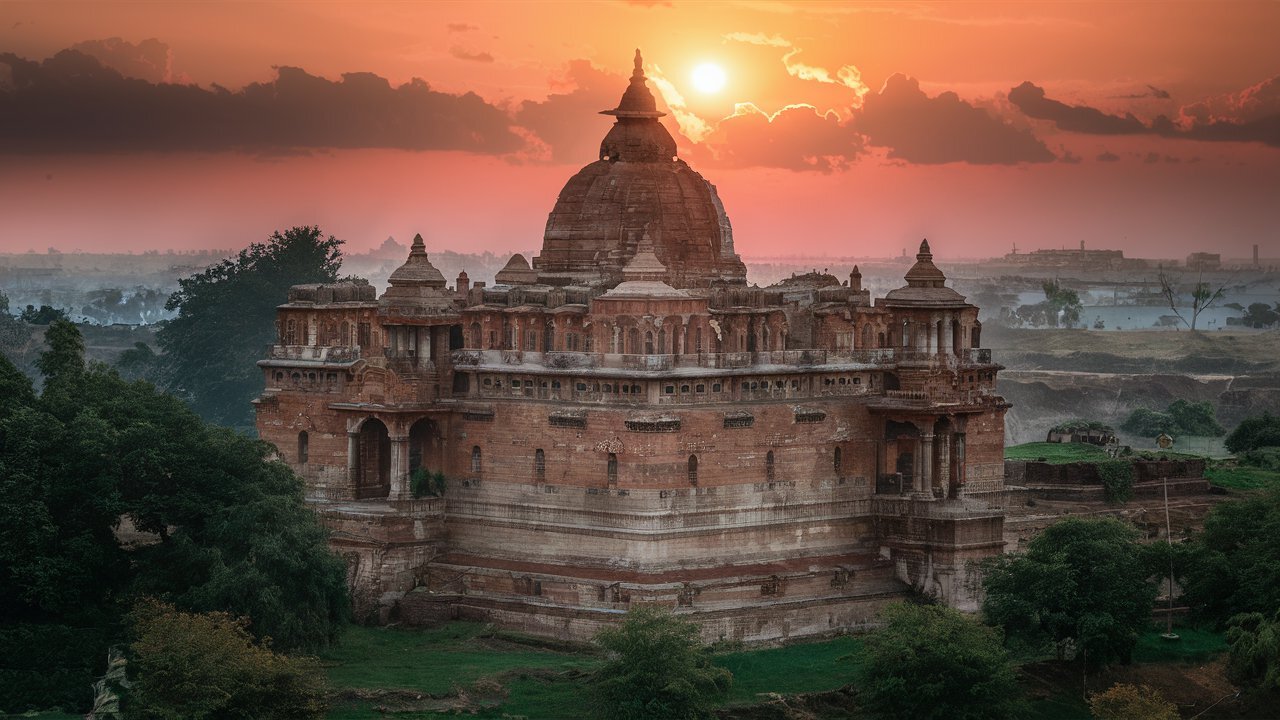
Curious about the golden age of classical Indian history? Look no further! The Gupta Empire, spanning from the 4th to the 6th centuries CE, is often hailed as a period of immense cultural, scientific, and artistic achievements. This era laid the foundations for much of modern Indian culture and advancements. From the invention of the concept of zero to the creation of stunning literary works, the contributions of the Gupta Empire are both profound and far-reaching. In this post, we'll unveil 40 fascinating facts about the Gupta Empire, shedding light on its influential rulers, groundbreaking achievements, and enduring legacy. Get ready to be transported back in time to one of history's most illustrious civilizations!
The Rise of the Gupta Empire
The Gupta Empire, often referred to as the "Golden Age of India," flourished between the 4th and 6th centuries CE. This period marked significant advancements in various fields, including science, art, and literature.
- The Gupta Empire was founded by Sri Gupta around 320 CE.
- Chandragupta I expanded the empire significantly, earning the title "Maharajadhiraja" (King of Kings).
- The Guptas established their capital at Pataliputra, modern-day Patna.
- The empire's territory stretched across northern and central India, including parts of modern-day Pakistan and Bangladesh.
Cultural and Scientific Achievements
The Gupta period is renowned for its cultural and scientific contributions. Scholars and artists thrived under the patronage of Gupta rulers.
- Kalidasa, one of India's greatest poets and playwrights, lived during this era.
- The famous Iron Pillar of Delhi, which has not rusted in over 1,600 years, was constructed during the Gupta period.
- Aryabhata, a prominent mathematician and astronomer, wrote the Aryabhatiya during this time.
- The concept of zero as a number was first recorded by Gupta mathematicians.
- Sushruta, known as the "Father of Surgery," wrote the Sushruta Samhita, a comprehensive text on surgery and medicine.
Religion and Philosophy
Religion and philosophy flourished under the Gupta Empire, with Hinduism, Buddhism, and Jainism all receiving royal support.
- The Guptas were primarily Hindu, but they were tolerant of other religions.
- Nalanda University, one of the world's first residential universities, was established during this period.
- The Ajanta Caves, famous for their Buddhist murals, were created during the Gupta era.
- Hindu temples with intricate carvings and sculptures were built, many of which still stand today.
- The Gupta rulers performed the Ashvamedha (horse sacrifice) to assert their dominance.
Economy and Trade
The Gupta Empire had a robust economy, with agriculture, trade, and commerce playing vital roles.
- The Guptas issued gold coins called Dinars, which were used for trade.
- Silk, spices, and precious stones were major exports to the Roman Empire and Southeast Asia.
- Agriculture was the backbone of the economy, with rice, wheat, and sugarcane being the main crops.
- Guilds played a significant role in the economy, regulating trade and commerce.
- The Guptas built extensive road networks to facilitate trade and communication.
Military and Administration
The Gupta Empire maintained a strong military and an efficient administrative system to manage its vast territories.
- The Guptas had a well-organized infantry, cavalry, and elephant corps.
- Samudragupta, known as the "Napoleon of India," expanded the empire through numerous military campaigns.
- The empire was divided into provinces called Bhuktis, each governed by a Uparika.
- Local administration was managed by village councils known as Sabhas.
- The Guptas maintained a spy network to keep tabs on their subjects and enemies.
Decline of the Gupta Empire
Despite its golden age, the Gupta Empire eventually faced decline due to various internal and external factors.
- The Huna invasions in the 5th century weakened the empire significantly.
- Internal rebellions and succession disputes further destabilized the empire.
- The last known ruler, Vishnugupta, struggled to maintain control over the remaining territories.
- By the end of the 6th century, the Gupta Empire had fragmented into smaller kingdoms.
Legacy of the Gupta Empire
The Gupta Empire left a lasting legacy that influenced Indian culture and history for centuries.
- The Gupta script, an early form of the Devanagari script, was developed during this period.
- Gupta art and architecture influenced later Indian and Southeast Asian styles.
- The Gupta period is often considered the classical age of Indian literature and science.
- Many Indian epics and Puranas were written or compiled during this time.
- The concept of zero and the decimal system, developed during the Gupta period, revolutionized mathematics.
Notable Gupta Rulers
Several rulers of the Gupta dynasty played pivotal roles in shaping the empire's history and legacy.
- Chandragupta I laid the foundation for the empire's expansion.
- Samudragupta is remembered for his military conquests and patronage of the arts.
- Chandragupta II, also known as Vikramaditya, presided over the empire's golden age.
- Kumaragupta I maintained the empire's prosperity and stability.
- Skandagupta defended the empire against the Huna invasions but struggled to maintain its former glory.
Art and Architecture
The Gupta period saw remarkable advancements in art and architecture, leaving behind a rich cultural heritage.
- The Gupta style of sculpture is characterized by its elegance and intricate details.
- Cave temples at Ajanta and Ellora showcase the artistic achievements of this era.
A Final Glimpse at Gupta Brilliance
Diving into the Gupta Empire's legacy, we've uncovered a civilization that was more than just a chapter in history books. It was a period marked by remarkable advancements in science, literature, and art, setting the stage for future generations. This era, often hailed as a golden age, showcased the ingenuity and creativity of its people. From Aryabhata's astronomical theories to the timeless beauty of Gupta architecture, each fact we've explored paints a picture of a society that valued knowledge, innovation, and cultural richness. As we reflect on these 40 fascinating facts, it's clear the Gupta Empire's influence extends far beyond its historical timeline, continuing to inspire and educate us about the power of human achievement. Let's carry forward the curiosity and spirit of exploration that defined this great empire, recognizing its contributions to our shared history and the foundation it laid for the modern world.
Was this page helpful?
Our commitment to delivering trustworthy and engaging content is at the heart of what we do. Each fact on our site is contributed by real users like you, bringing a wealth of diverse insights and information. To ensure the highest standards of accuracy and reliability, our dedicated editors meticulously review each submission. This process guarantees that the facts we share are not only fascinating but also credible. Trust in our commitment to quality and authenticity as you explore and learn with us.


